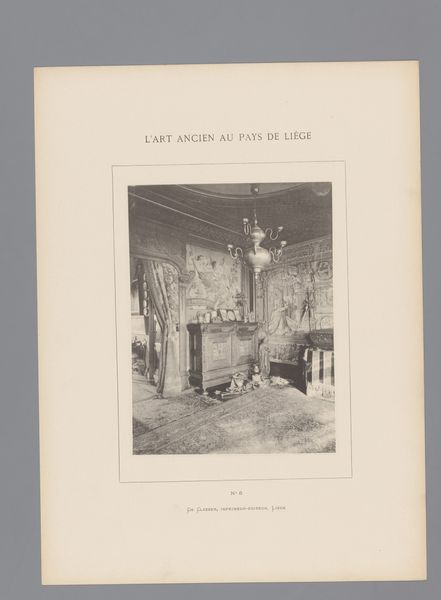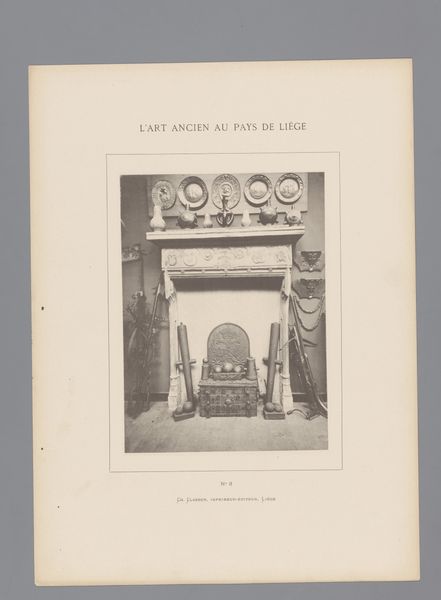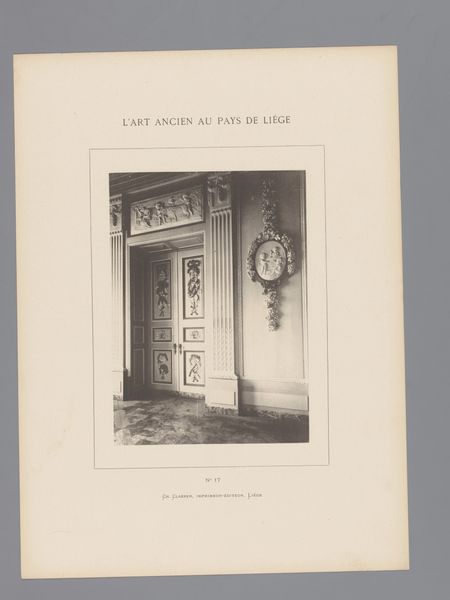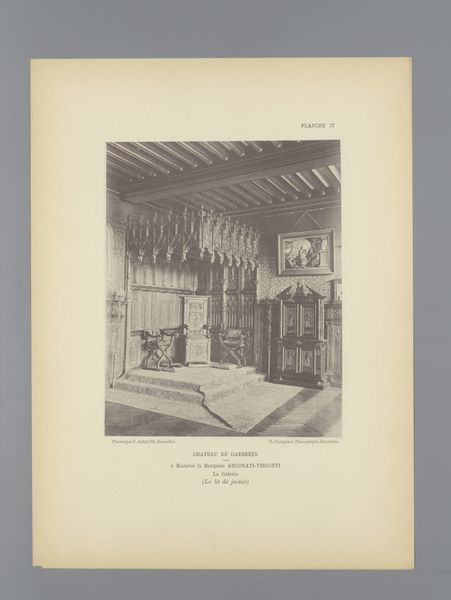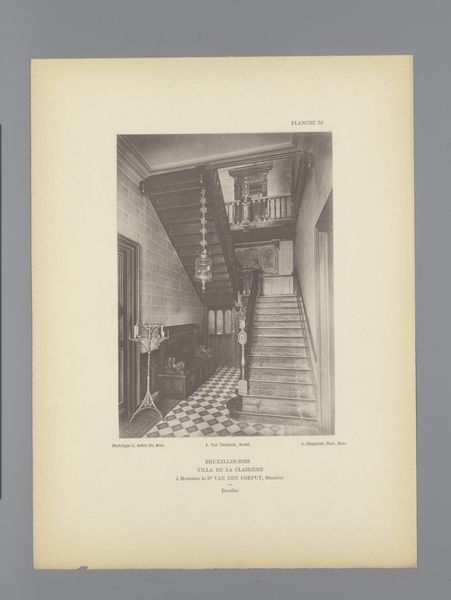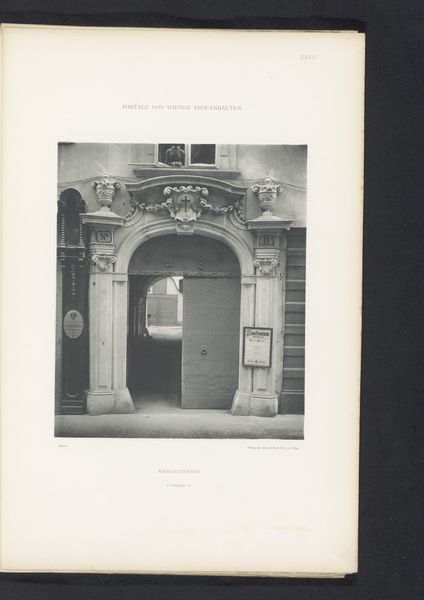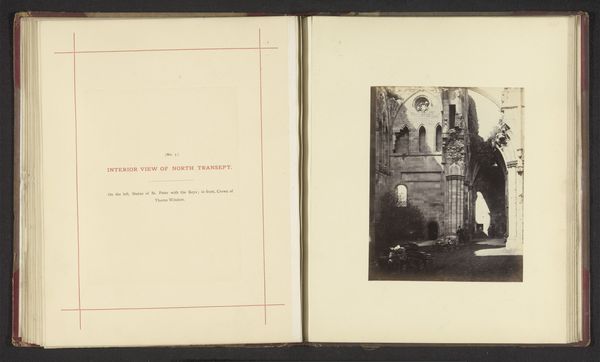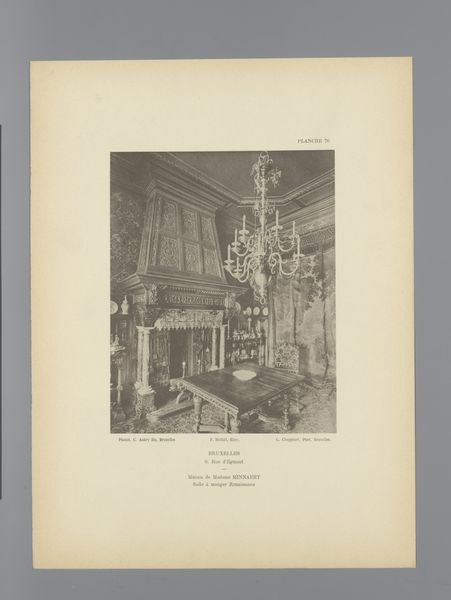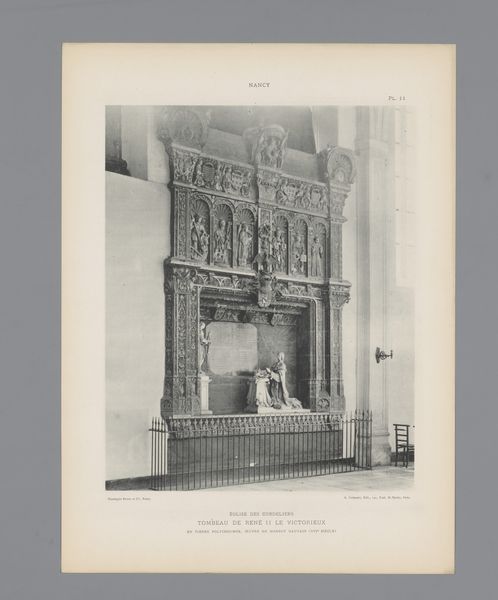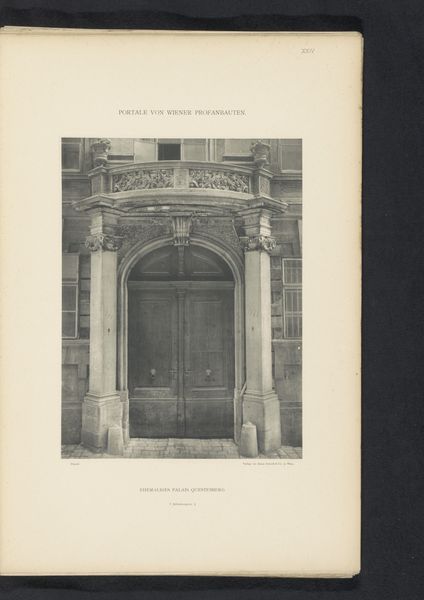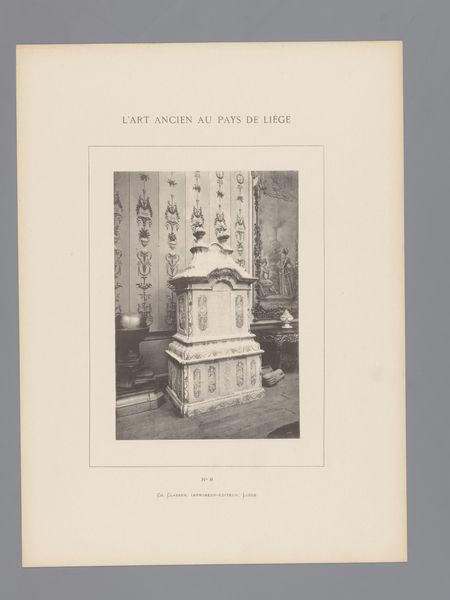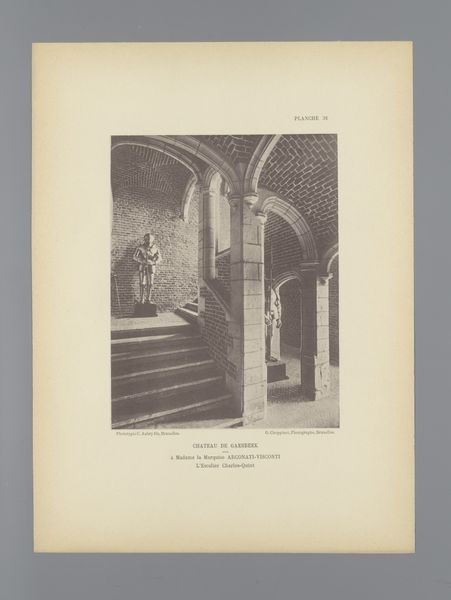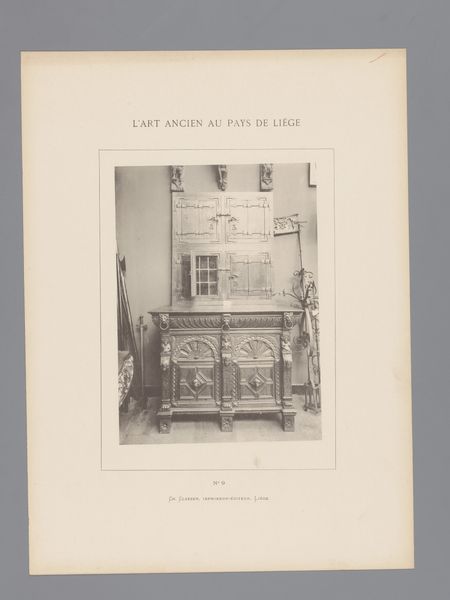
Schoorsteenmantel met vazen, opgesteld in het archeologisch museum in Luik, België before 1884
0:00
0:00
print, photography
# print
#
landscape
#
photography
#
ancient-mediterranean
Dimensions: height 223 mm, width 160 mm
Copyright: Rijks Museum: Open Domain
Curator: Editor: So, this is a photographic print from before 1884, showing a "Schoorsteenmantel met vazen," or a mantelpiece with vases, displayed at the archeological museum in Liège, Belgium. It has such a rigid composition, but the vases on the mantle give the composition more life, even if they look frozen in place. What narratives do you think it hints at? Curator: I see this image as a powerful document of how history is curated and presented. Think about the layers: an ancient artifact, photographed, then displayed within the context of a museum, further captured in print. This layered presentation affects its understanding. Editor: That’s fascinating! It does feel like a deliberate framing of the past. So how might this framing speak to contemporary audiences? Curator: Consider the act of preserving and displaying artifacts like this. Who gets to decide what aspects of history are worthy of showcasing, and who is left out of that narrative? It brings to mind questions around the social and political power dynamics inherent in museums and the study of archeology. Editor: Are you saying this photograph is unintentionally a critique of how museums create power? Curator: Perhaps unintentionally, yes. The chimney piece signifies domestic life and status, and yet here it sits stripped of its original context, becoming an object for scrutiny. Editor: I never considered it that way before, it felt like something very dead, presented with no consideration to modern problems. Now I'm much more interested! Curator: It encourages questioning, doesn't it? Instead of passively accepting history as fact, we need to critically examine the choices that shape it, and understand who has been included in historical narratives, and equally important, who has been excluded. Editor: Right! Like considering if there were other artifacts not considered "worthy" for the photo. Thank you; now, I see this seemingly simple photograph as something charged.
Comments
No comments
Be the first to comment and join the conversation on the ultimate creative platform.
